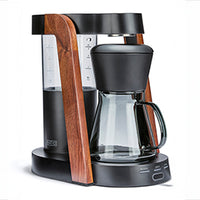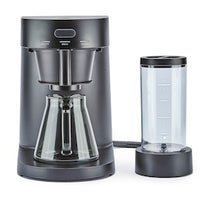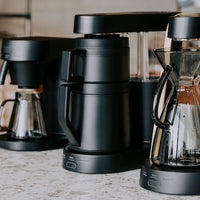Why Your First Pour Matters More Than You Think
In coffee brewing, the first pour might seem like a small step — just the start of a longer process. But in reality, that initial contact between water and coffee grounds sets the tone for everything that follows. Get it right, and you’re on your way to a clean, flavorful cup. Get it wrong, and you may never recover the balance, no matter how carefully you brew the rest.
Whether you’re using a pour-over, French press, or high-end drip brewer, the way you begin matters more than most people realize.
The Science of the Bloom
The first pour — also known as the bloom — triggers a key chemical reaction. When hot water hits fresh coffee grounds, it releases carbon dioxide (CO₂) trapped during the roasting process. This gas prevents water from fully saturating the grounds if not released properly.
The bloom phase allows CO₂ to escape and makes room for the water to extract the full flavor from the coffee. Skipping or rushing this step can result in a sour, uneven brew.
Key Bloom Guidelines
-
Use water just off the boil (about 200°F)
-
Pour just enough to wet all the grounds evenly
-
Let it sit for 30–45 seconds
-
Expect bubbling — that’s CO₂ escaping
A proper bloom helps unlock sweetness, balance, and clarity in your cup.
Why Uneven Saturation Leads to Uneven Flavor
The first pour also impacts how evenly the coffee bed is saturated. If some areas remain dry while others are soaked, the extraction will be uneven. This creates flavor imbalances: some grounds may over-extract (bitter), while others under-extract (sour).
When you saturate your coffee bed evenly from the start, you build the foundation for consistent extraction — and better tasting coffee.
Pouring Technique Tips
Whether you’re brewing manually or using a precision machine, here’s how to make your first pour count:
-
Start from the center: Pour in a spiral or slow outward circle to evenly wet the grounds.
-
Don’t pour too much: Aim for 2–3 times the weight of the coffee (e.g., 20g of grounds = 40–60g of water).
-
Use a gooseneck kettle: It offers better control over flow rate and direction.
Taking your time with the first pour isn’t just a nice touch — it’s the difference between an average cup and an exceptional one.
How the First Pour Sets Extraction Pace
Beyond saturation, your first pour also influences the total brew time. A rushed or uneven bloom can cause channeling, where water finds paths of least resistance through the coffee bed. Once these channels form, water will keep flowing through them instead of extracting from the entire coffee bed.
That means the extraction becomes lopsided — some grounds are overworked while others are barely touched.
Getting the bloom right helps avoid this. It keeps the grounds evenly distributed and prevents early channel formation.
Don’t Let the First Pour Be an Afterthought
It’s easy to focus on the middle and end of your brew: the timing, the pouring technique, the final volume. But treating the first pour like a throwaway step is one of the most common beginner mistakes.
This is especially true in pour-over methods, where your technique has a direct impact on extraction. But even immersion methods like French press benefit from an intentional bloom — letting gas escape before filling the rest of the brewer.
Treating the first pour as a deliberate act creates better results — and better habits.
Built-In Bloom: When Your Brewer Handles It for You
Some brewers are designed to prioritize even saturation and timing from the start. If you're using a thoughtfully engineered machine, much of the bloom process is already considered in how the water is delivered.
Ratio Coffee, for example, creates machines that reflect the best of manual brewing in an automated form — emphasizing balance, simplicity, and design. It’s a great fit for those who value quality without micromanaging every step.
It's a subtle but powerful feature — helping users get consistently balanced flavor without needing to master every detail themselves.
A Small Step That Changes Everything
In coffee brewing, tiny changes lead to big differences. Your first pour might only last 30 seconds, but it’s one of the most influential stages of the entire process.
Approach it with care. Watch how the grounds respond. Notice the aroma. When you give the bloom the attention it deserves, your entire cup benefits — in sweetness, balance, and clarity.
Frequently Asked Questions
What is the bloom in coffee brewing?
The bloom is the initial wetting of the grounds, which allows carbon dioxide to escape before full extraction begins. It typically lasts 30–45 seconds.
Do all brew methods need a bloom phase?
Not all, but most benefit from it — especially manual methods like pour-over, French press, and even AeroPress.
How much water should I use for the bloom?
About 2 to 3 times the weight of the coffee grounds. For 20g of coffee, use 40–60g of water.
Can I skip the bloom if I’m short on time?
You can, but it may lead to uneven extraction and flat or sour flavors. It’s a quick step that makes a noticeable difference.
 Ratio Eight S2
Ratio Eight S2
 Ratio Eight Original
Ratio Eight Original
 Ratio Six
Ratio Six
 Ratio Four
Ratio Four
 Compare Machines
Compare Machines






